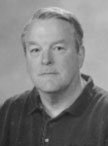
|
![[NEWS AND FACTS BANNER]](/URClipArt/misc/newsfacts.jpg) |
|||||||

SETTLING THE DUST
So it was natural that it was to dust that he eventually returned--and wrote a book that breathes new life into the ephemeral substance that for millennia has been regarded as either a fact of life, a nuisance, or a menace. "In many ways, the small is more interesting, more absorbing, and in some ways, bigger than the big," says Amato, professor of intellectual and cultural history and director of Rural and Regional Studies at Southwest State University in Marshall, Minnesota. His book, Dust: A History of the Small and the Invisible (The University of California Press, 2000), is the first to examine the history of dust and the relationship humans have had with what, until the 20th century, was the smallest earthly substance most people could imagine. To give a dust-jacket synopsis: The book explores dust as the boundary between the "visible" and "invisible" in the human imagination and how the interplay between those two spheres has shaped perceptions of the physical world. Amato argues that until relatively recently in human history, dust marked the limit of the visible world. "Once you were beyond dust, the door was wide open to speculation, fear, mythology," Amato says. But as science advanced, that changed. On one hand, new science and technology provided glimpses into molecules and microbes. On the other, advances in manufacturing created an entirely new order of dust--specific particulates that brought hazards such as radiation. "We began to make our own dust, and with our new sciences and new technologies, we began to try to control it," Amato says. "We know much more about the small than we ever did," he says. "Dust has become a matter of thought and control." The book has earned rave reviews since its publication early this year. Said the Los Angeles Times: "Dust is a diverting, thought-provoking amalgam of science, literature, intellectual, and social history. Playful yet serious, Amato's supple prose conveys the hidden poetry of his subject." For Amato, Dust falls into what he calls the category of "universal themes" in his scholarly work. Proud to be a "do-it-all-historian," he divides his scholarly pursuits between overarching histories like Dust, and books that revolve around specific settings--usually local to Minnesota or the Midwest--meant to tell a particular story of a place and time. Among other "universal" books he has published are Victims and Values: A History and Theory of Suffering; Guilt and Gratitude; and Death Book: Terrors, Consolations, Contradictions and Paradoxes. In the local category are his books The Great Jerusalem Artichoke Circus: The Buying and Selling of the American Rural Dream and When Father and Son Conspire: A Minnesota Farm Murder. For a scholar, his range of work seems unconventional, especially in an age in which many historians choose to specialize early in their careers. "I'm proud to be a maverick," he says. "I find most historical work constrictive and not very imaginative. To me, it doesn't get to the particular or rise to the universal." A native of Detroit, Amato graduated from the University of Michigan and Laval University in Quebec before coming to Rochester on a National Defense Scholarship to study Russian. He settled into the history department and wrote his dissertation on French Catholic thought in the 20th century. When that book was published, Amato's prolific career was launched. And while he has received a lot of attention for Dust, Amato balks at the suggestion that he's "written the book" on the topic because, like most subjects in the modern academy, the study of dust has become highly specialized. Depending on the particular particulate under discussion, the experts are numerous, Amato says. "There are probably 200 people on the faculty at Rochester who could talk about aspects of dust in much more detail than I could begin to imagine."
Maintained by University Public Relations | ||||||||
